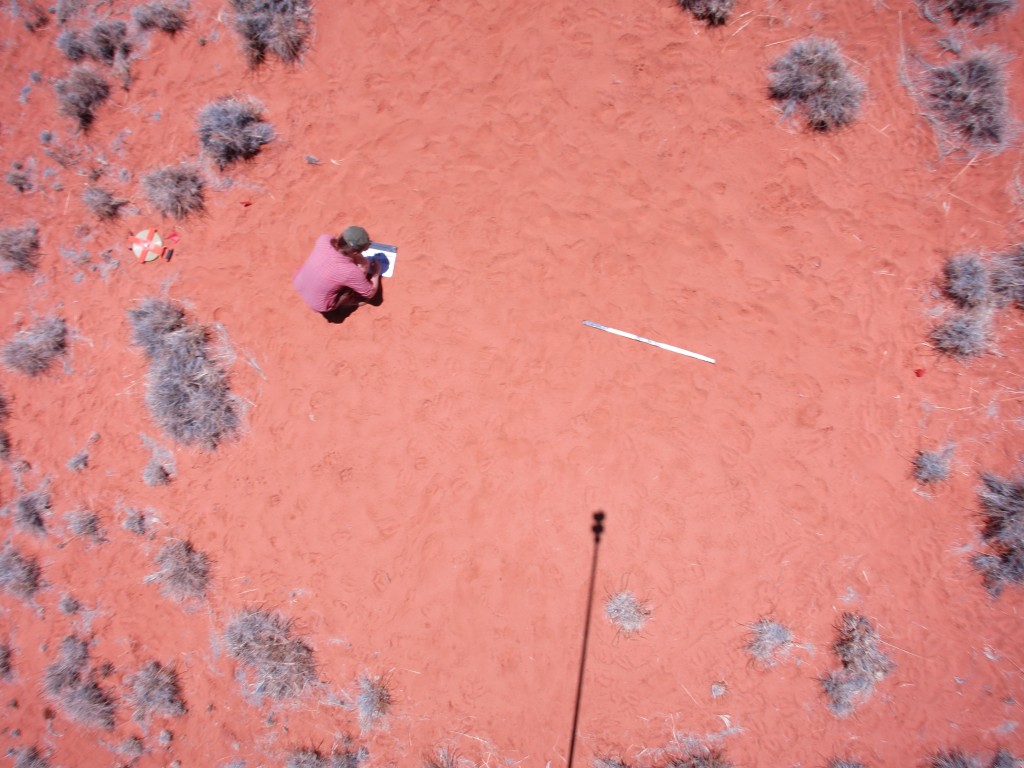As do most things that are highly symmetrical and otherwise exacting, the so-called fairy circles populating the grasslands of Namibia look intentional. They look careful and, well, supernatural. They just aren’t messy enough to be regular-natural.
It helps of course that the Namibian fairy circles don’t have a readymade natural explanation. A fairy circle consists of a region of grassland that’s completely devoid of grass and bordered by a bushy circumference of unusually robust grass growth. Fairy circles have a lifecycle, becoming noticeable at about two meters in diameter and growing to be up to 12 meters in diameter before eventually giving in to the surrounding grasslands and assimilating. This can take up to 60 years.
Videos by VICE
Researchers at Princeton University, led by ecologist Corina Tarnita, have come up with a new explanation for the circles based on model simulations. The circles, according to Tarnita and colleagues, exist thanks to a complex interplay between subterranean insect activity and the emergent self-organization of the plants themselves. The fairy circles are indeed the work of nature, but it’s a nature based not so much on messes, but on how seeming messes at small scales can yield unexpected—supernatural even—organization at larger scales, a phenomenon known generally as emergence.
The group’s work is described in the current issue of Nature.
The fairy circles are the center of a long-standing debate. On the one hand, some ecologists attribute the circles to the work of “subterranean engineers”—termites or ants whose excavations lead to the disappearance of grass as vegetation is chewed up in the process of burrowing. Complex large-scale patterns can be found in termite mounds elsewhere, so we might imagine the subterranean version of a termite city to be similarly symmetrical. Moreover, according to a 2013 study published in Science, sand termites have been found in 80 to 100 percent of all fairy circles.

Image: Tyler Coverdale
But, on the other hand, some ecologists are skeptical of this explanation and point out that correlation does not imply causation. The presence of sand termites doesn’t really prove anything, nor do termites explain the large size of the circles and their regular spacing across the grassland. To really explain things, we need to look to the grass itself. In particular, we need look at competition among different species of grass.
From this perspective, it seems likely that the circles represent nutrient reserves for the larger species of grass that populate their edges. The spacing among circles is then the result of competitive interactions between the tall grasses that depend on each circle. This hypothesis would seem to explain why the circles are found only within regions with just the right amount of rain, and, thus, just the right amount of nutrients.
Tarnita and colleagues basically argue that both perspectives are right. Simply, they were unable to generate the phenomenon in model simulations with either hypothesis alone. “These multi-scale patterns and other emergent properties, such as enhanced resistance to and recovery from drought, instead arise from dynamic interactions in our theoretical framework, which couples both mechanisms,” the group writes.
So, in conditions where nutrients are scarce, we can imagine patches of grass dying via intergrass competition, leaving circles that get progressively larger until the nutrient deficit is overcome. The circles then allow rainwater to collect in them, which supplies more nutrients, which benefits everybody, including the termites. It all works out.
So, the circles aren’t footprints of the gods, as in the local lore of the Himba people, but are instead examples of natural symbiosis that just happens to have elegant results. “Supernatural” is in the eye of the beholder.
More
From VICE
-

Malte Mueller/Getty Images -

(Illustrations by Anna Minkina; Sylfida via Getty Images)
